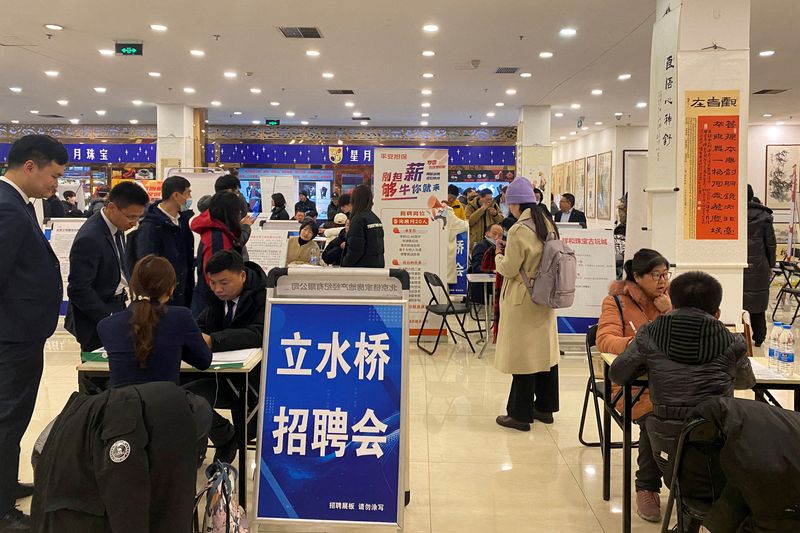
BEIJING (Reuters) -Chinese language employee Liu Shengzun misplaced two jobs in only one month as U.S. import tariffs shot as much as triple digits in April, forcing a Guangdong lighting merchandise manufacturing facility, after which a footwear maker, to cut back output.
Tariffs got here down dramatically this week, however Liu has given up on manufacturing facility jobs and is now again farming in his hometown in southern China.
“It has been extraordinarily tough this 12 months to search out regular employment,” mentioned the 42-year-old, who used to earn 5,000 – 6,000 yuan ($693-$832) a month as a manufacturing facility employee and now would not have a gentle supply of revenue. “I can barely afford meals.”
The fast de-escalation within the U.S.-China commerce conflict after the Geneva talks final weekend has helped Beijing keep away from a nightmare situation: mass job losses that would have endangered social stability – what the ruling Communist Social gathering sees as its top-most precedence, key to retaining its legitimacy and finally energy.
However this 12 months’s U.S. tariff hikes of 145% left lasting financial harm and even after the Geneva talks stay excessive sufficient to proceed to harm the job market and sluggish Chinese language development, say economists and coverage advisers.
“It was a win for China,” a coverage adviser mentioned of the talks, talking on situation of anonymity as a result of subject’s sensitivity. “Factories will be capable to restart operations and there will probably be no mass layoffs, which is able to assist keep social stability.”
However China nonetheless faces difficult U.S. tariffs of 30% on high of duties already in place.
“It’s tough to do enterprise at 30%,” the adviser added. “Over time, it is going to be a burden on China’s financial growth.”
Earlier than the assembly in Switzerland, Beijing had grown more and more alarmed about inside indicators that Chinese language companies have been struggling to keep away from bankruptcies, together with in labour-intensive industries akin to furnishings and toys, Reuters reported final week.
Now there’s some aid.
Lu Zhe, chief economist at Soochow Securities, estimates the variety of jobs in danger has fallen to lower than 1 million from about 1.5-6.9 million earlier than the tariff discount.
Alicia Garcia-Herrero, chief Asia Pacific economist at Natixis, had estimated the triple-digit tariffs may trigger 6-9 million job losses. Present tariff ranges may set off 4-6 million layoffs, whereas if tariffs drop by an additional 20% some 1.5-2.5 million jobs may very well be misplaced, she mentioned.
China’s 2025 financial development may sluggish by 0.7 share factors in probably the most optimistic situation, 1.6 factors beneath the present tariffs, or 2.5 factors if the battle returns to April’s depth, she estimated.




